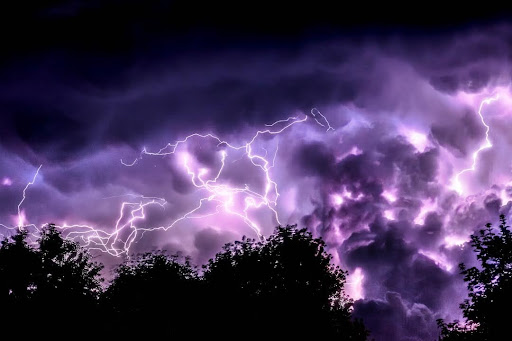
Understanding the differences between flood damage and storm damage in terms of insurance coverage can be complex. Yet, it’s crucial for homeowners, property owners, and real estate investors.
Flood damage and storm damage are distinct in their definitions. They also differ in how insurance policies cover them. This can lead to confusion when disaster strikes and it’s time to file a claim.
Our homes are our sanctuaries. They’re often our most significant investments. It’s essential to know how to protect them from the unpredictable forces of nature.
This article aims to shed light on these differences. It will guide you through the intricacies of flood and storm damage insurance coverage. It will also provide tips on flood damage restoration and water damage restoration.
By the end, you’ll have a clearer understanding of your insurance policy. You’ll also know how to ensure you have the right coverage for your property. Let’s dive in.
Understanding Flood Damage and Insurance Coverage
Flood damage is unique because it involves water entering properties from natural sources. This includes overflowing rivers, tidal surges, or heavy rains leading to surface runoff. Such events define flood damage distinctly.
Standard homeowners insurance policies often do not cover flood damage. This can be a surprise for many property owners. Without the proper insurance, the financial burden can be significant after a flood event.
In the United States, the National Flood Insurance Program (NFIP) fills this gap. The NFIP provides flood insurance to property owners, renters, and businesses. It helps protect against the devastating financial losses caused by flooding.
Understanding flood zones is crucial for insurance. Properties in high-risk flood zones might face different insurance requirements. These zones affect the need for and cost of flood insurance.
Flood insurance also involves unique premiums and deductibles. These can vary significantly based on flood risk and property location. Knowing these details ensures you’re prepared for potential flood damage.
Understanding Storm Damage and Insurance Coverage
Storm damage generally involves harm caused by wind, hail, or debris from storms. This can lead to roof damage, broken windows, or fallen trees. Unlike flood damage, these are often abrupt impacts from weather events.
Most standard homeowners insurance policies cover storm damage. This is comforting for policyholders as it typically includes natural events like hurricanes or tornadoes. It is essential, however, to verify specific coverage details within your policy.
For properties in high-risk storm areas, additional coverage may be necessary. This can include specific endorsements or riders added to your existing policy. Such additions help ensure comprehensive protection against severe weather.
Deductibles and premiums for storm damage vary. They often depend on the location and specific risks associated with your property. Understanding these costs is crucial for effective financial planning.
Windstorm insurance can play a vital role in protecting against storm damage. In areas prone to hurricanes, it may be a separate policy. This coverage focuses on damage caused by high-speed winds, ensuring more extensive protection.
Key Differences Between Flood and Storm Damage Coverage
Flood and storm damage differ significantly in terms of insurance coverage. One key distinction lies in coverage limits and exclusions. Flood policies often come with lower coverage limits and more exclusions than storm policies. This makes understanding the fine print crucial for homeowners.
Flood damage requires a separate insurance policy. Standard homeowners insurance does not cover floods. This means individuals must purchase flood insurance, often through the National Flood Insurance Program (NFIP). This can be an important step for those living in flood-prone areas.
The claim processes for flood and storm damage also vary. Flood insurance claims might involve more scrutiny and documentation. Storm damage claims are typically simpler, as they fall under standard policy coverage. Being aware of these differences can save time and stress during recovery.
Waiting periods for policy effectiveness further distinguish flood from storm coverage. Flood insurance usually has a 30-day waiting period before coverage begins. In contrast, storm damage is often covered immediately after policy purchase. Timing can make a significant difference, especially with approaching weather threats.
Understanding policy language and definitions is crucial for both types of coverage. Terms like “flood” and “windstorm” might have specific meanings. Homeowners should clarify these with their insurance providers to avoid any misconceptions or unwelcome surprises.
The Restoration Process for Flood and Storm Damage
Restoring a property after flood damage involves several critical steps. The process begins with water extraction, followed by thorough drying and dehumidification. Cleaning and sanitation are essential to prevent mould growth and address health risks.
Storm damage restoration typically starts with debris removal and securing the property. This can include roof repairs, window replacements, and addressing structural damage. Swift action can prevent further deterioration and hazards.
Professional restoration services play a vital role in both flood and storm recovery. These experts have the necessary tools and expertise to handle complex damages. They can also help ensure efficient and effective restoration, minimising long-term issues.
Mitigation and preventative measures can reduce the extent of damage in future events. Installing sump pumps, backflow valves, and using proper drainage systems can mitigate flood risks. Regular maintenance and storm proofing techniques can lessen potential storm damage. These steps enhance safety and protect investments in the long run.
Navigating Insurance Claims for Flood and Storm Damage
Successfully navigating insurance claims requires careful documentation of all damage. It’s crucial to take photos and make detailed notes. This evidence supports your claim and helps avoid disputes.
Timely filing is essential to ensure your claim is processed. Insurance policies often have specific deadlines. Missing these can jeopardise your chances of reimbursement.
Public adjusters can be invaluable in complex situations. They represent your interests and help negotiate with insurance companies. Their expertise can result in a more favourable claim outcome.
Understanding your insurance policy is key to a successful claim. Reviewing the declarations page highlights your coverage specifics. Regular policy reviews ensure you remain adequately protected against potential losses.
Additional Considerations for Property Owners
Climate change is influencing both flood and storm severity, which impacts insurance costs. As events become more frequent, premiums might rise. Understanding these trends is critical for budgeting future expenses.
Developing a safety plan is essential for property protection and personal safety. Evacuation routes should be clear, and essential items readily accessible. Being prepared minimises risk during a disaster.
Local ordinances and building codes can affect insurance coverage. Some regulations may require specific building standards. Compliance can be beneficial, possibly reducing risk and insurance costs.
Government assistance can provide relief when insurance falls short. Grants or loans may be available post-disaster. Additionally, certain disaster-related losses can have tax benefits.
Conclusion
Understanding the differences between flood and storm damage insurance is crucial. It ensures you are well-prepared and well-protected. Regularly reviewing and updating your insurance policy helps maintain appropriate coverage.
Being proactive is key to protection against water damage. Consider potential risks, plan for emergencies, and seek professional advice for comprehensive coverage. This approach secures peace of mind amidst unforeseen natural events.



